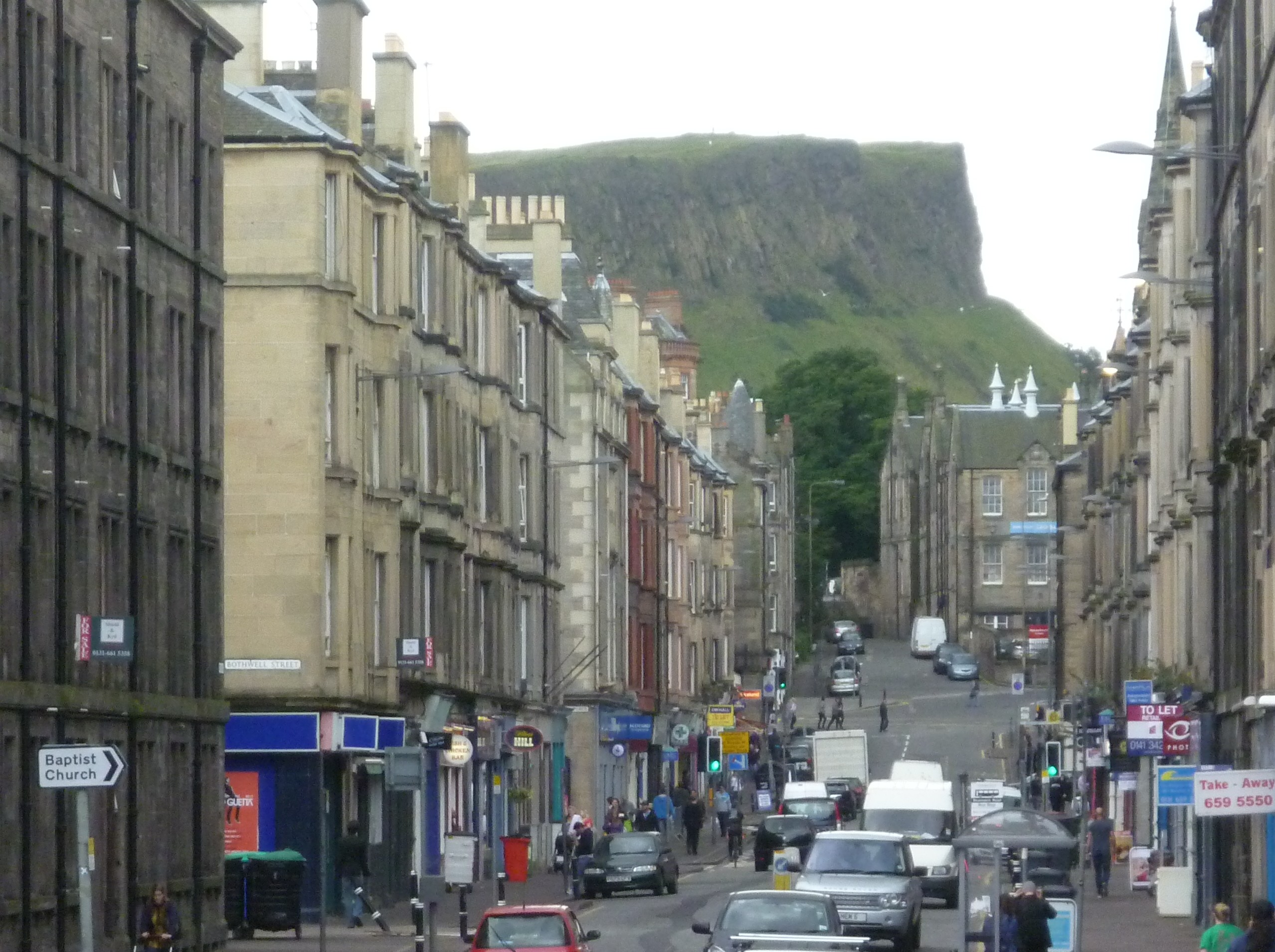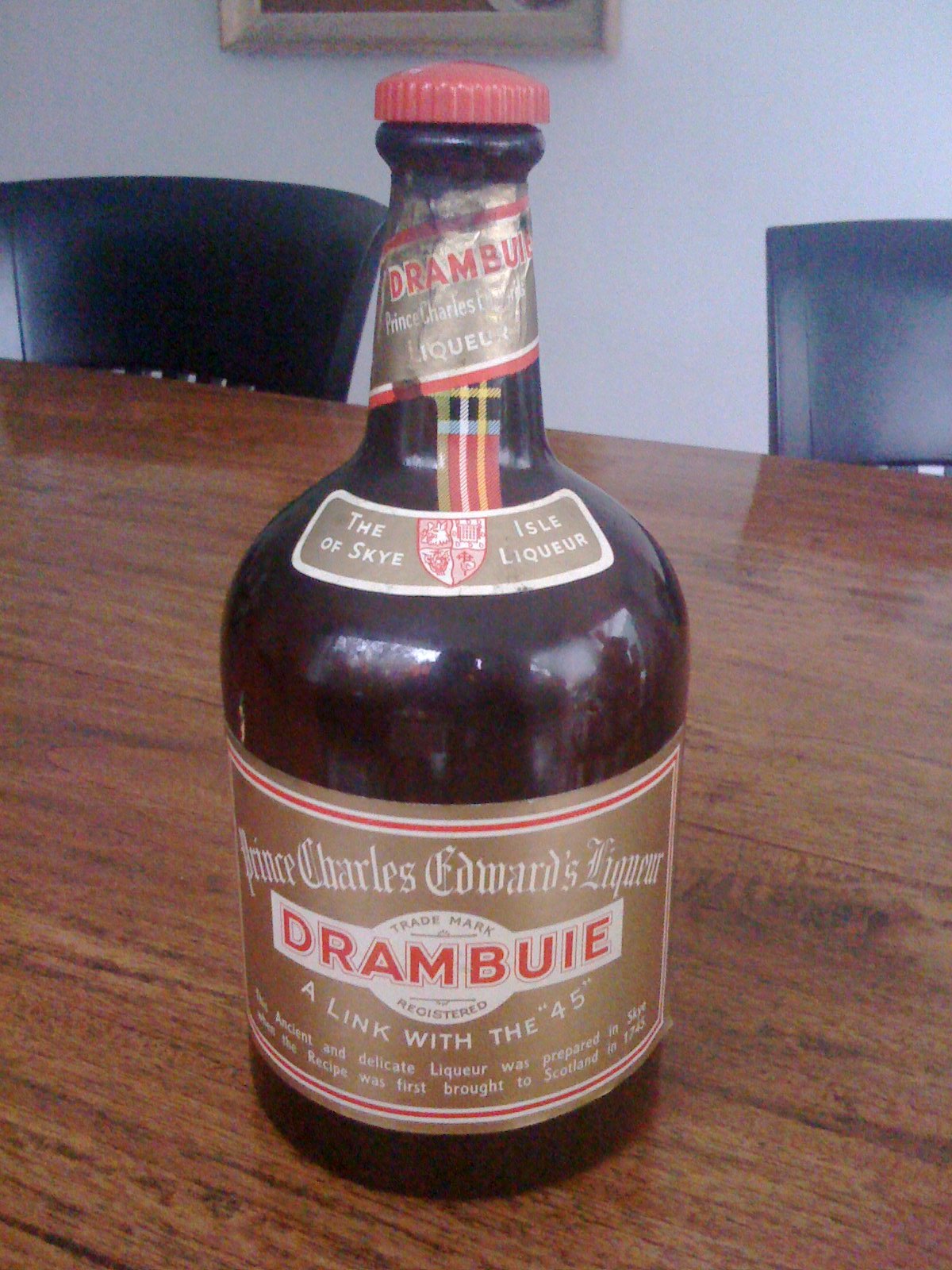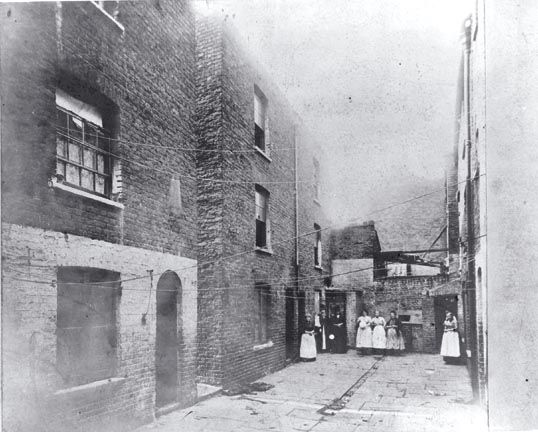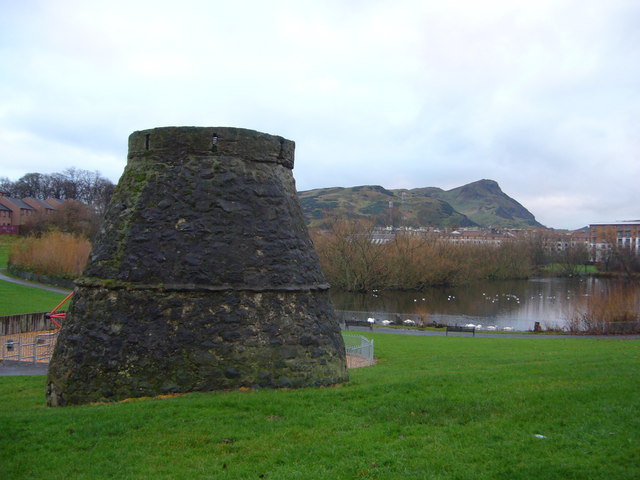|
Easter Road (street)
Easter Road is an arterial road in north Edinburgh, the capital of Scotland. The road is so called as it was known as the "Easter (eastern) road to Leith". As maps of Edinburgh in the late 18th century show, it had a counterpart in "Wester Road" (now Broughton Road and Bonnington Road). Until the creation of Leith Walk in the middle of the 17th century these were the two main routes from Leith to Edinburgh. Historic personages who have ridden up Easter Road have included Mary, Queen of Scots (1561) and Oliver Cromwell (from Leith Links in 1650). History According to Robert Chambers, writing in 1824, Leith Walk, as its name suggests, was a gravel-surfaced footway, only opened to wheeled traffic after the completion of North Bridge in 1772. Before that Easter Road had been the route taken by coaches running between Edinburgh and Leith. The Edinburgh article in the Statistical Account of Scotland (1791–99) contains evidence from the publisher William Creech that coach traffic ... [...More Info...] [...Related Items...] OR: [Wikipedia] [Google] [Baidu] |
Edinburgh
Edinburgh ( ; gd, Dùn Èideann ) is the capital city of Scotland and one of its 32 Council areas of Scotland, council areas. Historically part of the county of Midlothian (interchangeably Edinburghshire before 1921), it is located in Lothian on the southern shore of the Firth of Forth. Edinburgh is Scotland's List of towns and cities in Scotland by population, second-most populous city, after Glasgow, and the List of cities in the United Kingdom, seventh-most populous city in the United Kingdom. Recognised as the capital of Scotland since at least the 15th century, Edinburgh is the seat of the Scottish Government, the Scottish Parliament and the Courts of Scotland, highest courts in Scotland. The city's Holyrood Palace, Palace of Holyroodhouse is the official residence of the Monarchy of the United Kingdom, British monarchy in Scotland. The city has long been a centre of education, particularly in the fields of medicine, Scots law, Scottish law, literature, philosophy, the sc ... [...More Info...] [...Related Items...] OR: [Wikipedia] [Google] [Baidu] |
Feu (land Tenure)
Feu was long the most common form of land tenure in Scotland, as conveyancing in Scots law was dominated by feudalism until the Scottish Parliament passed the Abolition of Feudal Tenure etc. (Scotland) Act 2000. The word is the Scots variant of fee. The English had in 1660 abolished these tenures, with ''An Act taking away the Court of Wards...'', since 1948 known as the Tenures Abolition Act 1660. History Prior to 1832, only the vassals of the crown had votes in parliamentary elections for the Scots counties. This favoured subinfeudation as opposed to outright sale of land. This was changed by the Scottish Reform Act 1832, which increased the franchise of males in Scotland from 4,500 to 64,447. In Orkney and Shetland islands, land is still largely possessed as udal property, a holding derived or handed down from the time when these islands belonged to Norway. Such lands could previously be converted into feus at the will of the proprietor and held from the Crown or the Marquess ... [...More Info...] [...Related Items...] OR: [Wikipedia] [Google] [Baidu] |
The Singing Street
"The Singing Street", is a short film made in 1950 in Edinburgh, Scotland and first shown in 1951. It was created by a group of teachers from Norton Park School, who filmed some of their pupils playing street games, accompanied by traditional children's songs, at various locations in the city. It documented an oral tradition which has all but vanished in the decades since it was made. Norton Park School Norton Park was an inner-city Junior Secondary School (equivalent to a Secondary Modern School in England at the time). The old burgh boundary between Edinburgh and Leith runs through the school grounds. The building still stands beside the Easter Road football stadium of Hibernian F.C. but is now a business conference centre. At the time of filming the area was a more industrial environment than now with numerous industrial premises including two major printing works, a large engineering works, a timber merchant's yard and a tobacco factory surrounded by tenement buildings buil ... [...More Info...] [...Related Items...] OR: [Wikipedia] [Google] [Baidu] |
Drambuie
Drambuie is a golden-coloured, 40% ABV liqueur made from Scotch whisky, heather honey, herbs and spices. The brand was owned by the MacKinnon family for 100 years, and was bought by William Grant & Sons in 2014. Etymology The name "Drambuie" possibly derives from the Scottish Gaelic phrase ''an dram buidheach'', "the drink that satisfies", a claim made by the original manufacturers of the drink. History Legend After the Battle of Culloden in 1746, Prince Charles Edward Stuart fled to the isle of Skye. There he was given sanctuary by Captain John MacKinnon of Clan MacKinnon. According to family legend, after staying with the captain, the prince rewarded him with this prized drink recipe. This version of events is disputed by historians who believe it to be a story concocted to boost sales of the drink. The legend holds that the recipe, which at that time had no known name, was given by Clan MacKinnon to John Ross in the late 19th century. James Ross, his son and a local busi ... [...More Info...] [...Related Items...] OR: [Wikipedia] [Google] [Baidu] |
Easter Road Area, Edinburgh
Easter,Traditional names for the feast in English are "Easter Day", as in the ''Book of Common Prayer''; "Easter Sunday", used by James Ussher''The Whole Works of the Most Rev. James Ussher, Volume 4'') and Samuel Pepys''The Diary of Samuel Pepys, Volume 2'') as well as the single word "Easter" in books printed i157515841586 also called Pascha (Aramaic, Greek, Latin) or Resurrection Sunday, is a Christian festival and cultural holiday commemorating the resurrection of Jesus from the dead, described in the New Testament as having occurred on the third day of his burial following his crucifixion by the Romans at Calvary . It is the culmination of the Passion of Jesus Christ, preceded by Lent (or Great Lent), a 40-day period of fasting, prayer, and penance. Easter-observing Christians commonly refer to the week before Easter as Holy Week, which in Western Christianity begins on Palm Sunday (marking the entrance of Jesus in Jerusalem), includes Spy Wednesday (on which the betray ... [...More Info...] [...Related Items...] OR: [Wikipedia] [Google] [Baidu] |
Sett (paving)
A sett, also known as a block or Belgian block, is a broadly rectangular quarried stone used in paving roads and walkways. Formerly in widespread use, particularly on steeper streets because setts provided horses' hooves with better grip than a smooth surface, they are now encountered rather as decorative stone paving in landscape architecture. Setts are often referred to as "cobblestones", although a sett is distinct from a cobblestone in that it is quarried or worked to a regular shape, whereas the latter is generally a small, naturally-rounded rock. Setts are usually made of granite. Places Europe Places paved with setts include many streets in Rome and elsewhere in Italy (where blocks are called ''sampietrini'' or ''bolognini''), since the technique was first used by Romans. In Aberdeen (Scotland), and much of Edinburgh's Old Town and New Town, a large number of streets retain the original setts. Silloth on Solway, a seaside town in Cumbria, still has setts (originally ... [...More Info...] [...Related Items...] OR: [Wikipedia] [Google] [Baidu] |
Holyrood Park
Holyrood Park (also called the Queen's Park or King's Park depending on the reigning monarch's gender) is a royal park in central Edinburgh, Scotland about to the east of Edinburgh Castle. It is open to the public. It has an array of hills, lochs, glens, ridges, basalt cliffs, and patches of gorse, providing a wild piece of highland landscape within its area. The park is associated with the royal palace of Holyroodhouse and was formerly a 12th-century royal hunting estate. The park was created in 1541 when James V had the ground "circulit about Arthurs Sett, Salisborie and Duddingston craggis" enclosed by a stone wall. Arthur's Seat, an extinct volcano and the highest point in Edinburgh, is at the centre of the park, with the cliffs of Salisbury Crags to the west. There are three lochs: St Margaret's Loch, Dunsapie Loch, and Duddingston Loch. The ruins of St Anthony's Chapel stand above St Margaret's Loch. Queen's Drive is the main route through the Park. St Margaret's Well ... [...More Info...] [...Related Items...] OR: [Wikipedia] [Google] [Baidu] |
Slum Clearance In The United Kingdom
Slum clearance in the United Kingdom has been used as an urban renewal strategy to transform low income settlements with poor reputation into another type of development or housing. Early mass clearances took place in the country's northern cities. Starting from 1930, councils were expected to prepare plans to clear slum dwellings, although progress stalled upon the onset of World War II. Clearance of slum areas resumed and increased after the war, while the 1960s saw the largest number of house renewal schemes pursued by local authorities, particularly in Manchester where it was reported around 27% 'may' have been unfit for human habitation - Although the majority were well built solid structures which could have been renovated or repurposed; housing, churches, schools and pubs which formed close-knit communities were devastated, with families dispersed across other areas. Towards the end of the decade, a housing act in 1969 provided financial encouragement for authorities and la ... [...More Info...] [...Related Items...] OR: [Wikipedia] [Google] [Baidu] |
Leith Central Railway Station
Leith Central Railway Station was a railway station in Leith, Scotland. It formed the terminus of a North British Railway branch line from Edinburgh Waverley. The station was built on a large scale, and it included a trainshed over the platforms. Following the amalgamation of the City of Edinburgh and the Burgh of Leith in 1920, the two formerly separate tram systems were joined (including the conversion of Edinburgh's system from cable haulage to electricity). The improved services provided intense competition with the railway, affecting the viability of Leith Central station. Until 1952 Leith Central had a regular passenger service to Edinburgh. Description of original station The most striking feature of Leith Central Station was its size. The station occupied a whole town block at the foot of Leith Walk, being bounded by Leith Walk on the western side; Easter Road on the east and Duke Street to the north. The four platforms were positioned around fifteen feet above street ... [...More Info...] [...Related Items...] OR: [Wikipedia] [Google] [Baidu] |
Trinity College Kirk
Trinity College Kirk was a royal collegiate church in Edinburgh, Scotland. The kirk and its adjacent almshouse, Trinity Hospital, were founded in 1460 by Mary of Gueldres in memory of her husband, King James II who had been killed at the siege of Roxburgh Castle that year. Queen Mary was interred in the church, until her coffin was moved to Holyrood Abbey in 1848. The original concept was never completed. Only the apse, choir and transepts were completed. The church was originally located in the valley between the Old Town and Calton Hill, but was systematically dismantled in the 1840s (under the supervision of David Bryce) due to the construction of Waverley Station on its site. Its stones were numbered in anticipation of rebuilding and were stored in a yard on Calton Hill. Reconstruction did not begin until 1872, when it was moved to a site on Chalmers Close on the newly formed Jeffrey Street overlooking the original site. Early history The church and hospital of So ... [...More Info...] [...Related Items...] OR: [Wikipedia] [Google] [Baidu] |
George Heriot
George Heriot (15 June 1563 – 12 February 1624) was a Scottish goldsmith and philanthropist. He is chiefly remembered today as the founder of George Heriot's School, a large independent school in Edinburgh; his name has also been given to Heriot-Watt University, as well as several streets (and a pub, the Jinglin' Geordie, after his nickname) in the same city. Heriot was the court goldsmith to Anne of Denmark, the wife of King James VI of Scotland, as well as to the king himself; he became very wealthy from this position, and wealthier still as a result of lending this money back to the king and the rest of his court. He moved to London along with the court in 1603, at the time of the Union of Crowns, and remained in London until he died in 1624. He had married twice but had no recognised children surviving at the time of his death, and he left the bulk of his estate to found a hospital to care for "faitherless bairns" (orphaned children) in his home city. Early life Herio ... [...More Info...] [...Related Items...] OR: [Wikipedia] [Google] [Baidu] |
Restalrig
Restalrig () is a small residential suburb of Edinburgh, Scotland (historically, an estate and independent parish). It is located east of the city centre, west of Craigentinny and to the east of Lochend, both of which it overlaps. Restalrig Road is the main route through the area, running from London Road, at Jock's Lodge, to Leith Links. It is in the ward of Lochend. History and buildings The place name ''Restalrig'' means ''ridge of the miry land'' (from ''lestal'', a northern dialect term meaning ''mire'' and ''rig'', Scots and northern English meaning a linear field or land-holding). It is first mentioned as Lestalric in 1165, when Edward de Lestalric built a church on the site. The church was completed in 1210 by his grandson, Sir Thomas de Lestalric. The area, over the following centuries, is variously named as Lestalryk, Restalric or Rastalrig. The Norman noble family the de Lestalrics were the ancient landowners in the area (including nearby South Leith). Sir John d ... [...More Info...] [...Related Items...] OR: [Wikipedia] [Google] [Baidu] |







.jpg)
